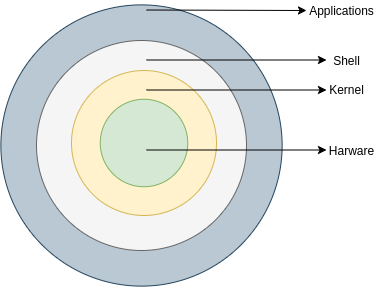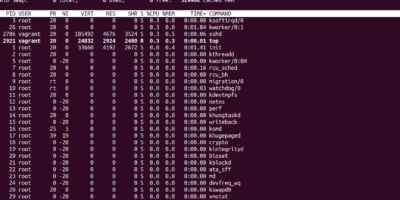Linux is an open source, unix-like class of operating systems that is based on the linux kernel. (A kernel is the main component of an operating system, it is the core interface between the hardware and software). “Unix Like” mean that the operating system is based on the original Bell Labs UNIX operating system. An operating system is an interface that acts as the link between computer user and computer hardware. An operating system allows the software to talk to the hardware.
Linux began as a kernel, created by Linux Torvalds while he was still a student at the University of Helsinki. It was released on September 17, 1991 as a free and open source operating system, meaning the source code can be modified and distributed commercially or non-commercially as defined in the GNU General Public Licence.
LINUX DISTRIBUTIONS.
A linux distribution is an operating system that is based on the Linux kernel. Since the source code for the linux operating systems was made completely available to the public, people from all over the world started modifying the source code and created their own versions of Linux. Today there are more than 500 Linux distributions. The following are the most popular distributions of linux.
- Linux Mint
- Ubuntu
- Elementary
- Debian
- Manjaro
- Red Hat
- Google Android
- Kubuntu
- Fedora
- Parrot OS
- Lunar Linux
- Alpine Linux
THE LINUX SHELL
A shell is simply an interface that allows you to interact with the operating system. Shell comes in 2 types.
- LUI … line User interface.
- GUI … Graphical User interface
LUI is more or less the same as DOS(Disk Operating System) prompts. The Microsfot windows DOS prompt sets the stage for executing command line code. On the other hand GUI is a type of interface that allows the user to interact with the operating system through visual representations.
Linux presents you with an option of running it in GUI or LUI mode. It is important to note that Line User interface is much more powerful than graphical user interface. If you install linux in LUI mode you have to understand basic Linux commands in order to get started.
THE ARCHITECTURE OF LINUX.
The linux operating system is composed of the following key components.

The hardware Layer – Consists of all peripheral devices and components, HDD, CPU, RAM, Keyboard, Mouse, Webcam, graphic cards etc.
Kernel – Is the main component of an operating system and acts as the core link between the computer hardware and its processes. There are different kinds of kernels.
Monolithic Kernel – This type of kernel performs all the hardware and driver operations. From memory, CPU, inter-process communications, file systems management to server calls. Linux kernel falls under this category.
Micro Kernel – Manages only specific components of an operating system, eg Memory, inter-process communications and CPU.
Hybrid – This type of kernel combines aspects of monolithic kernel and micro kernel. Examples include Windows Kernel.
Shell – Acts as an interface between the user and the kernel. It accepts instructions from the user in form of commands and also executes kernel’s functions.
Applications – Are the utility programs running on the operating system. Can be any application like media player, web browser, zoom, text editor etc.
APPLICATIONS OF LINUX OPERATING SYSTEM.
Due to it’s free and open source nature, the use of linux has been growing steadily since it’s release. It is important to note that linux runs approximately 90% of the public cloud workload. Linux is therefore seen as a key player in the server market.
Even closer to you, is the linux based electronic home devices including but not limited to the following:
- Smart TVs
- Phones (Android OS is based on linux kernel)
- Smart Watches
- Car Navigation systems and GPS.
- Routers.
- Modems.
Linux also runs some of the most popular open source software such as kubernetes(A container orchestration manager developed by google), Docker(A tool that makes it easier to create, deploy and run applications using containers).
WHY USE LINUX.
- It’s main advantage is that it is an open source operating system. Meaning you can get access to the source code, modify, contribute and distribute the source code without prior permissions.
- Linux provides very high levels of privacy to the user.
- It has very large community Support.
- Comes in various Distributions that can be used to suit your specific needs.
- It is very secure and does not require any antivirus.
- Easy to update
- Has very high performance compared to other operating systems.
Despite all these advantages, Linux has some few disadvantages
- Maybe difficult and confusing for beginners.
- Software support – A number of applications that run on windows do not work on linux. However there is a recent application called wine that is able to run windows applications on linux once installed.



